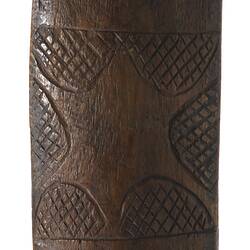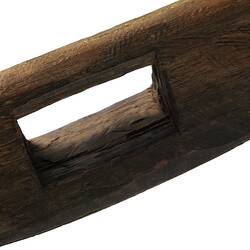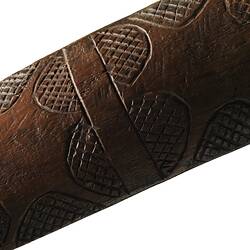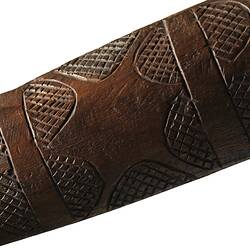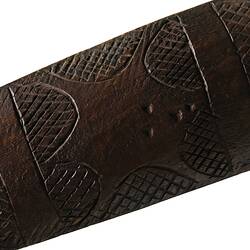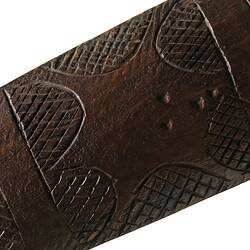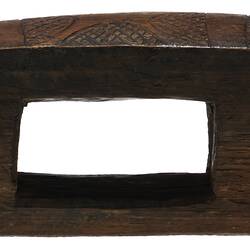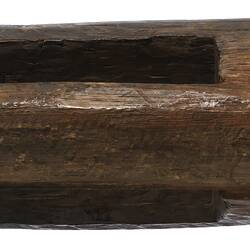Summary
Early collectors of Aboriginal cultural items were ignorant of the complexity and diversity of the many Aboriginal groups and Nations of Australia and often failed to document the maker or origin of items. However, the markings on this mulga are indicative of the style common to south-eastern Australia.
Dja Dja Wurrung/Yorta Yorta man Rodney Carter explains the importance and significance of the highly individual markings found on Aboriginal shields;
'For me, the shields or the symbols upon the shields represent identity. You can liken them to what we use now as titles for our houses. The lines, the coours, the carvings - they tell people who you are and, more importantly, they tell people where you come from.' Rodney Carter, 2010
The traditional engraving tool used by Aboriginal men in Victoria for marking their designs on the mulga (parrying shield) differed depending not only on the type of timber used but also the materials available to them. Important cultural knowledge on the properties of the timbers and what tools could be used to incise the designs was taught to younger men. The tools used included mussel shells, specially shaped stone, volcanic glass, or a small stick with a sharp stone or possum-tooth attached to the end.
The maker of this mulga used another material, one not available to earlier generations of carvers. The distinctive design of a diamond pattern and smooth dividing bands were engraved with a tool made from metal. The pattern is characteristic of the art of Victorian Aboriginal people that has been practiced for countless generations.
Local Name
Mulga
Physical Description
Thin elliptical shaped shield. Handle carved from the solid. Anterior surface decorated with an incised semi-circle and band design, that is repeated from end to end. The semi-circles have been cross hatched and the incised bands run width ways across surface. The wood has a natural two-tone colour.
Significance
Metal was initially introduced into northern Australia, in the 1700s by visiting Macassans fishing for trepang. It was not until later British settlement that iron axes and other metal tools became more frequently available to Aboriginal groups in Victoria. The ancient artistic traditions and designs of the Victorian Aboriginal people continue to be passed to new generations of artists who also use new materials and technologies to create their distinctive mark.
More Information
-
Object/Medium
Shield
-
Maker
-
Locality
-
Collector
-
Object Measurements
710 mm (Length), 80 mm (Width), 90 mm (Height)
-
Classification
-
Date Made
-
Maker
-
Clan/Language Group
-
Place Made
-
Indigenous Region
-
Keywords
-
Collection Names
-
Type of item
-
Discipline
-
Category
-
Collecting Areas

